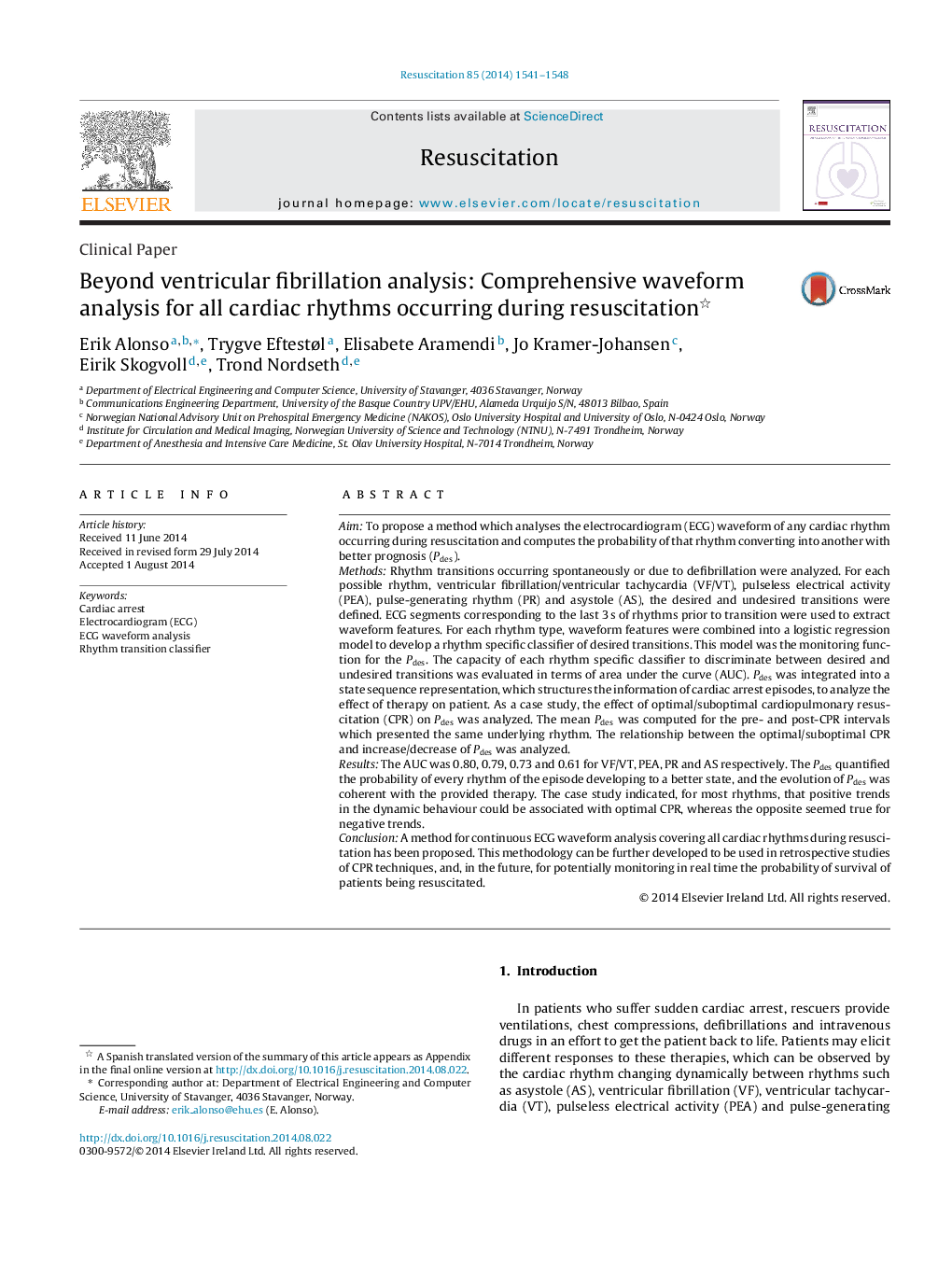| Article ID | Journal | Published Year | Pages | File Type |
|---|---|---|---|---|
| 5998174 | Resuscitation | 2014 | 8 Pages |
AimTo propose a method which analyses the electrocardiogram (ECG) waveform of any cardiac rhythm occurring during resuscitation and computes the probability of that rhythm converting into another with better prognosis (Pdes).MethodsRhythm transitions occurring spontaneously or due to defibrillation were analyzed. For each possible rhythm, ventricular fibrillation/ventricular tachycardia (VF/VT), pulseless electrical activity (PEA), pulse-generating rhythm (PR) and asystole (AS), the desired and undesired transitions were defined. ECG segments corresponding to the last 3Â s of rhythms prior to transition were used to extract waveform features. For each rhythm type, waveform features were combined into a logistic regression model to develop a rhythm specific classifier of desired transitions. This model was the monitoring function for the Pdes. The capacity of each rhythm specific classifier to discriminate between desired and undesired transitions was evaluated in terms of area under the curve (AUC). Pdes was integrated into a state sequence representation, which structures the information of cardiac arrest episodes, to analyze the effect of therapy on patient. As a case study, the effect of optimal/suboptimal cardiopulmonary resuscitation (CPR) on Pdes was analyzed. The mean Pdes was computed for the pre- and post-CPR intervals which presented the same underlying rhythm. The relationship between the optimal/suboptimal CPR and increase/decrease of Pdes was analyzed.ResultsThe AUC was 0.80, 0.79, 0.73 and 0.61 for VF/VT, PEA, PR and AS respectively. The Pdes quantified the probability of every rhythm of the episode developing to a better state, and the evolution of Pdes was coherent with the provided therapy. The case study indicated, for most rhythms, that positive trends in the dynamic behaviour could be associated with optimal CPR, whereas the opposite seemed true for negative trends.ConclusionA method for continuous ECG waveform analysis covering all cardiac rhythms during resuscitation has been proposed. This methodology can be further developed to be used in retrospective studies of CPR techniques, and, in the future, for potentially monitoring in real time the probability of survival of patients being resuscitated.
